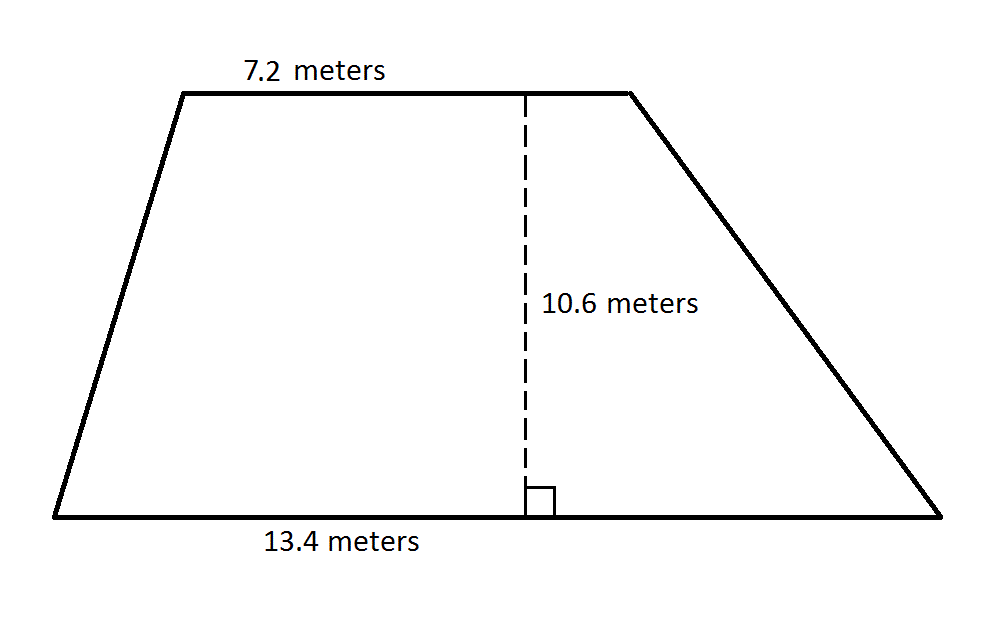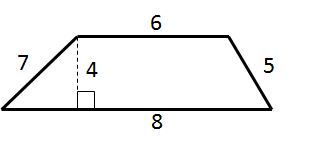All SSAT Middle Level Math Resources
Example Questions
Example Question #21 : Trapezoids
Find the area of a trapezoid with a height of 


The area 



Example Question #1811 : Hspt Mathematics

What is the area of the above trapezoid?
To find the area of a trapezoid, multiply one half (or 0.5, since we are working with decimals) by the sum of the lengths of its bases (the parallel sides) by its height (the perpendicular distance between the bases). This quantity is
Example Question #1812 : Hspt Mathematics
Find the area of the trapezoid:

The area of a trapezoid can be determined using the equation 
Example Question #22 : Trapezoids

What is the area of the trapezoid?
To find the area of a trapezoid, multiply the sum of the bases (the parallel sides) by the height (the perpendicular distance between the bases), and then divide by 2.
Example Question #254 : Geometry

The above diagram depicts a rectangle 





The length of a leg of 

Since the triangle is isosceles, then 



Therefore, the orange region is a trapezoid with bases 


This is the length of one leg of the triangle.
Example Question #2 : How To Find The Area Of A Trapezoid
A trapezoid has a height of 


Use the following formula, with 
Example Question #131 : Quadrilaterals
What is the area of a trapezoid with height 20 inches and bases of length 100 and 200?
Set 


The area of a trapezoid can be found using this formula:
The area is 3,000 square inches.
Certified Tutor
Certified Tutor
All SSAT Middle Level Math Resources
























































